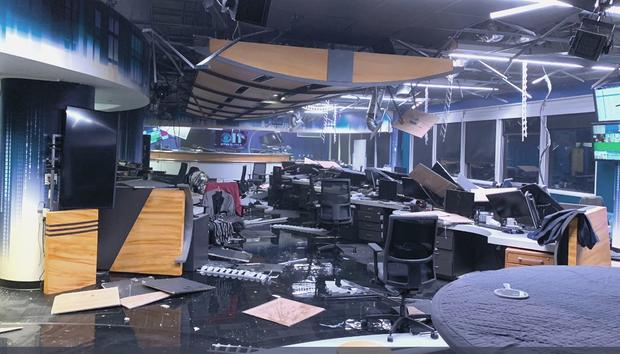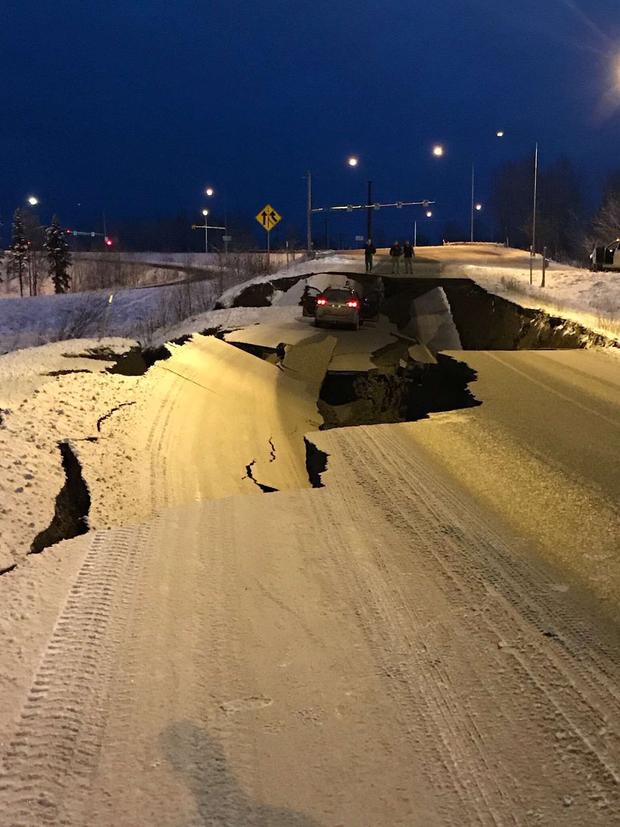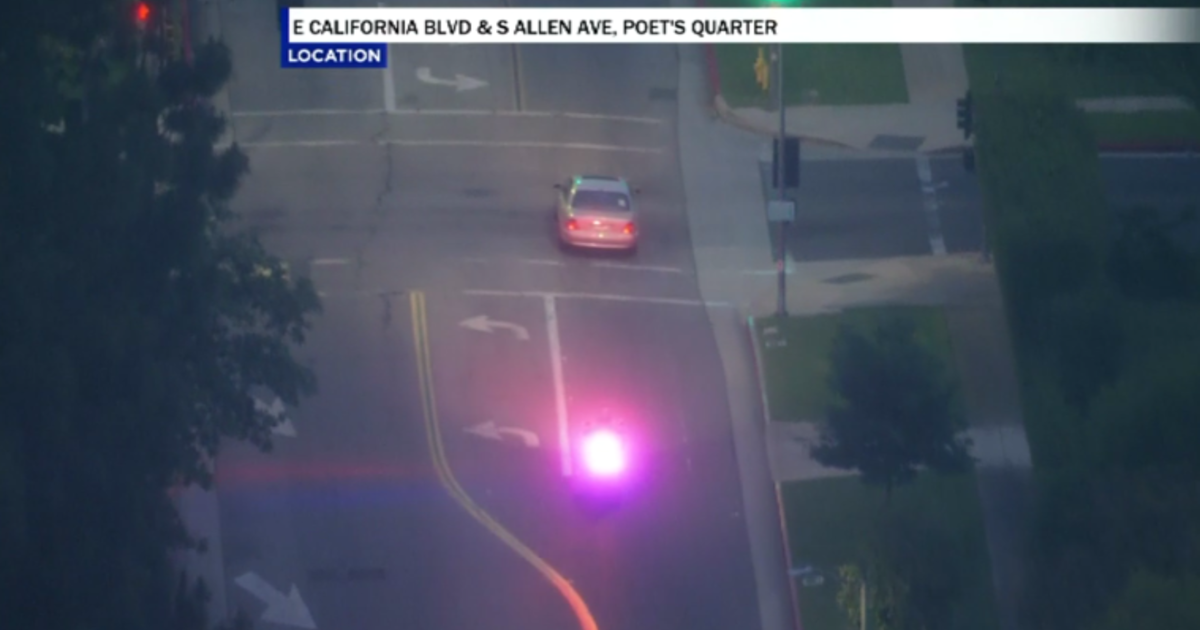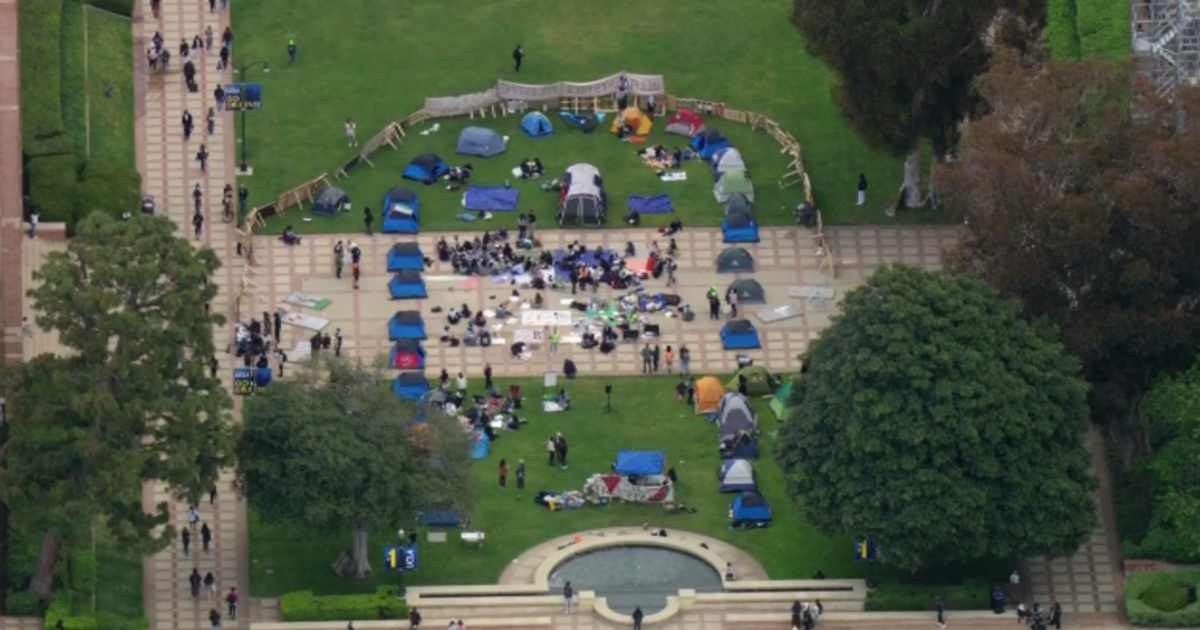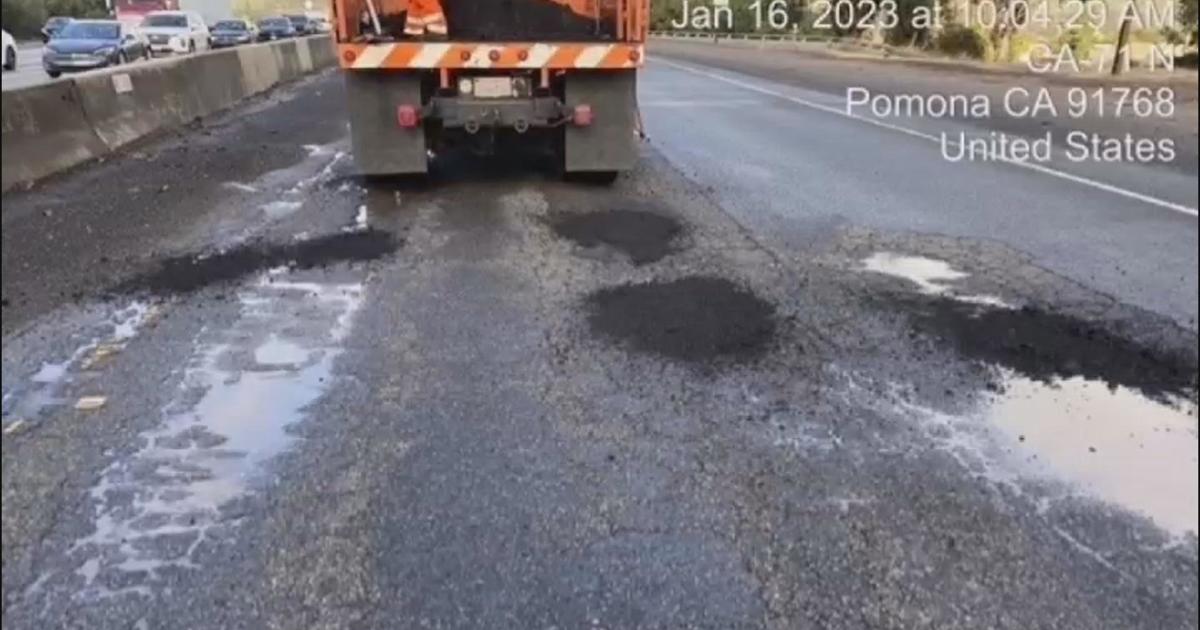7.0-Magnitude Quake Causes Serious Damage After Rattling Anchorage, Alaska
ANCHORAGE, Alaska (CBSLA/AP) — Back-to-back earthquakes measuring 7.0 and 5.7 rocked buildings and buckled roads Friday morning in Anchorage, prompting people to run from their offices or take cover under desks and triggering a warning to residents in Kodiak to flee to higher ground for fear of a tsunami.
The U.S. Geological Survey says the 7.0 earthquake struck at 9:29 a.m. Pacific time, centered about 7 miles north of Anchorage and about 25 miles below the surface. The earthquake was initially reported at a magnitude of 6.6 before being upgraded to 7.0.
The shaking broke store windows, opened cracks in a two-story building downtown, disrupted electrical service and disabled traffic lights, snarling traffic. It also threw a full-grown man out of his bathtub. There were no immediate reports of any deaths or serious injuries.
People went back inside buildings after the earthquake, but a smaller 5.7 magnitude aftershock a few minutes later sent them running back into the streets again.
"Because it's deep, it was felt quite widely... we got reports from about 400 miles away," Alaska state seismologist Michael West told CNN.
Shortly after the quake, a tsunami warning was issued for the southern Alaska coastal areas of Cook's Inlet and part of the Kenai peninsula and about 6,100 residents were told to go to higher ground. However, that warning was later canceled. There was no tsunami warning issued for California.
"I expect to see significant disruption to infrastructure because it sounds like liquefaction was a major factor in this earthquake," Cal Tech Seismologist Dr. Lucy Jones told CBS2. "That's a situation where you shake a loose soil, it compresses, if there's water in that soil, as the soil compresses, the water gets compressed, it acts like quick sand. And quick sand does a really bad job of holding up buildings."
A large section of road near the Anchorage International Airport collapsed, marooning a car on a narrow island of pavement surrounded by deep chasms in the concrete. The Federal Aviation Administration halted flights at the airport, although the airport itself tweeted that it was still open. The airport's website showed that almost all flights had been either canceled, delayed or diverted.
Anchorage's school system canceled classes and asked parents to pick up their children while it examined buildings for gas leaks or other damage.
The University of Alaska Anchorage campus shut down for the day, KTVA-TV reported. All non-essential personnel were told to go home and not come in.
The 800-mile Alaska oil pipeline was shut down while crews were sent to inspect it for damage.
Officials opened an Anchorage convention center as an emergency shelter. Gov. Bill Walker issued a disaster declaration.
Video shot by a reporter for CBS-affiliate KTVA-TV showed extensive damage to their newsroom. TV equipment and computers were smashed, with debris strewn across the floors.
Jones told CBS2 that Thursday's earthquake was smaller than the devastating and historic quake that struck Alaska in 1964 because of where it occurred in the earth's surface.
"It's in the slab, so for people who understand plate tectonics, we have the Pacific Ocean going underneath Alaska, and at the interface you get the really big earthquakes, the 9.2 back in 1964," Jones said. "But as the slab goes down, it's now getting released a little bit, and we now have a normal fault sort of spreading out the slab as it goes down."
On March 27, 1964, Alaska was hit by a magnitude 9.2 earthquake, the strongest recorded in U.S. history, centered about 75 miles east of Anchorage. The quake, which lasted about 4½ minutes, and the tsunami it triggered claimed about 130 lives.
"So this is a much smaller earthquake than '64, and the shaking is probably similar though in Anchorage, because this earthquake is right underneath Anchorage," Jones said.
Jones explained that the quake would not trigger any aftershocks in California because of the distance between the two states.
"A M7.0 might be able to trigger over 100 miles or so," Jones tweeted. "No effect anywhere else. Alaska does not trigger California quakes and vice versa."
Jones said the Northridge earthquake which occurred in January of 1994, killing 57 people and injuring thousands more, serves as a good comparison for the Anchorage quake.
"This earthquake is 7.0, Northridge is 6.7, so there's something like three times as much energy being released in this event. But it's deeper, and therefore everyone's somewhat farther away," Jones said.
"Of course, Anchorage is a smaller city than Los Angeles, but it's still got 300,000 people," Jones added. "So everything that we've seen, fires getting set off, basically everything thrown off of any shelf that's available, good buildings built to code doing fine, old buildings being damaged. It's what we see every time."
CONTINUING COVERAGE: Massive Earthquake Rocks Anchorage
Alaska averages 40,000 earthquakes per year, with more large quakes than the 49 other states combined. Southern Alaska has a high risk of earthquakes because of tectonic plates sliding past each other under the region.
(© Copyright 2018 CBS Broadcasting Inc. All Rights Reserved. The Associated Press contributed to this report.)
